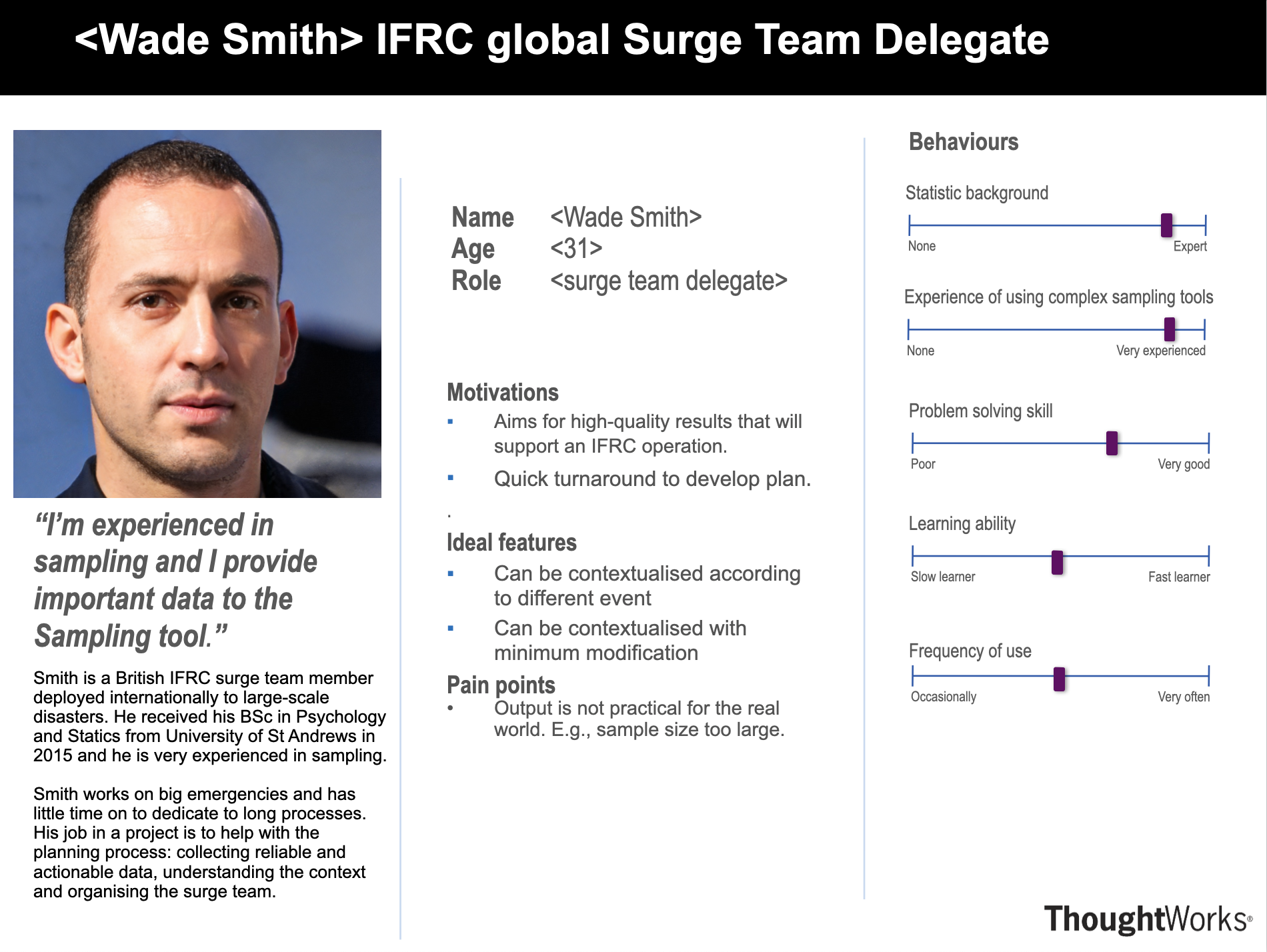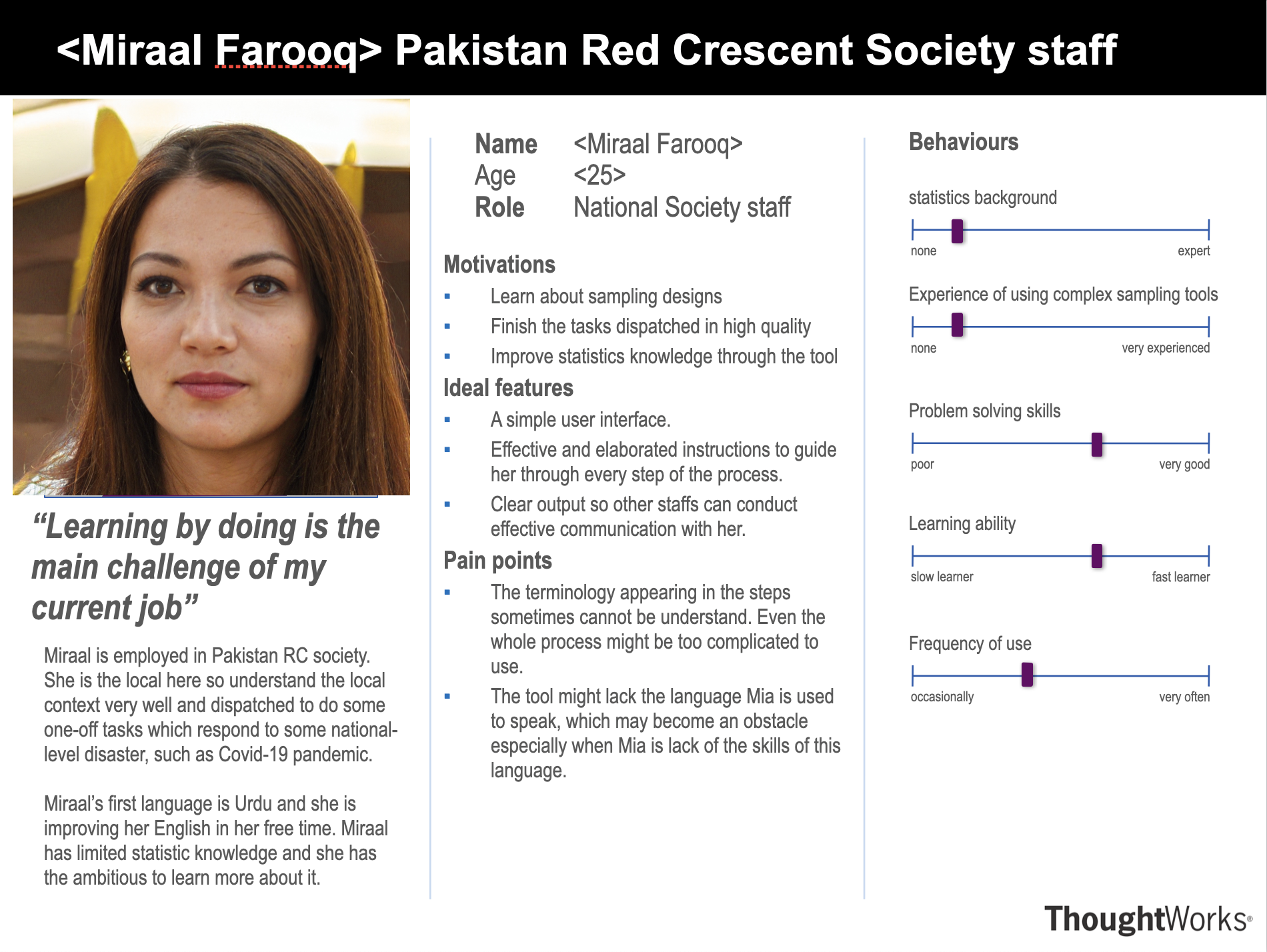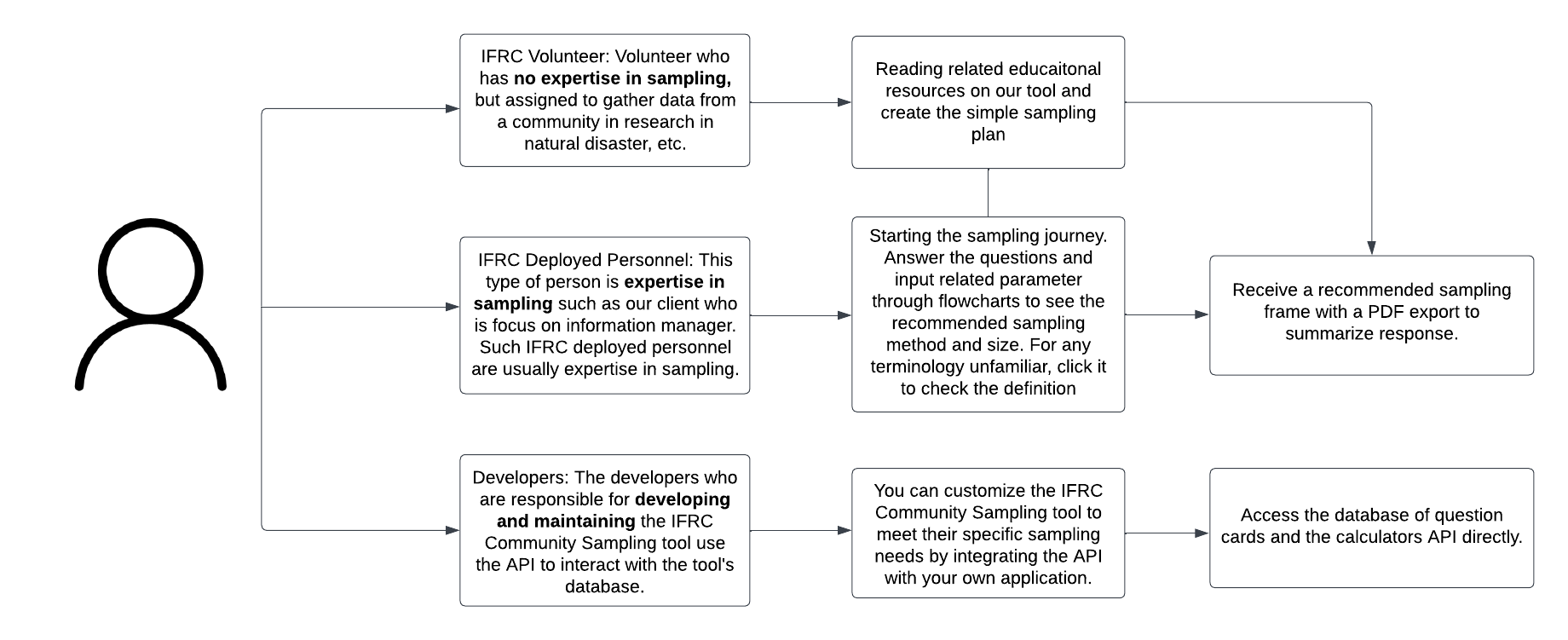REQUIREMENTS
- Home
- Requirements
Project Background
The International Federation of Red Cross and Red Crescent Societies (IFRC) is a global humanitarian organization that works to prevent and alleviate human suffering. As a way to digitise and make processes more efficient, the IFRC has developed IFRC GO, a platform to connect information on emergency needs with the right response.
Sampling is one of the key methods for the IFRC (or any other humanitarian organisation) to understand the views of a certain population. Sampling is meant to be a scientific approach, however, as also outlined in our Abstract, country-level teams do not always have the expertise, time and/or resources to conduct proper sampling. As a consequence, sampling - a method that is thought of as a rigorous approach - yields statistically incorrect results that should not be trusted and can not be generalised.
Our Community Sampling Tool will serve as an extension to the aforementioned IFRC GO platform with the goal of encouraging correct sampling.
Problem Statement
Technical problems
- Existing tools are either too simple or overly complex.
- They lack usability and human centred design.
- Tools can lead to biased approaches as they do not provide guidance on how to conduct sampling.
Methodological problems
- People use “convenience sample”, whereby they only survey parts of the population that are easily accessible to them.
- Results will not be representative of the population as a whole.
- No learning curve is provided to help users understand different sampling processes.
Project Goal
The general goal is to create an intuitive tool that guides users through the sampling process. Based on our research, there are several sampling approaches, such as simple random, time-location or cluster, that are used on a regular basis by IFRC staff.
However, there's no one-solution-fits-all approach. Every situation and survey has unique conditions and they must all be taken into account when sampling. Our design follows a funnel-questioning model. From the ideal sample population to the specifics of the sample, we take as much information as we can to determine the most appropriate method to sample.
High level goals
- Sampling web application with several sampling methods.
- Frontend implementation of a decision tree to determine sampling method.
- Provide educational content and resources at every step of the sampling process.
Client Requirements
Our main way of collecting requirements was meeting with several IFRC staff members including Rachel Yales, Alex Howes, Eero Sario and Vincent Annoni.
At the beginning of our project, we focused our weekly meetings on requirements gathering. In-between meetings our team also met to discuss how feasible and realistic certain requests were to then funnel this feedback back into the upcoming meetings. The IFRC team was just as responsive and enthusiastic as us, so we were able to establish a quick feedback loop and iterate quickly.
Broad requirements
- Cater to all levels - from volunteer to statistician.
- Intuitive tool that guides users through the sampling process.
- Compatible with the IFRC GO platform for future work.
User Interviews
We continued refining the requirements by conducting semi-structured interviews to collect qualitative data and by sending out a questionnaire to collect quantitative data. The questionnaire was sent to anyone who has previously used sampling techniques for example students, volunteers, or statisticians.
Q1: Do you have an online platform for data collection that you find efficient?
A: No
Q2: Why not?
A: Since many of the staff members like me don't have a very strong statistics background
and have not done much field research before, we find many existing platforms such
as ENA or Grid Sample too complicated to use. Also,
most of them do not help with the sampling design. Ideally, I'm looking for
a tool that can help us develop a sampling methodology step by step,
that is, learning by doing, and the tool must have clear guidance and instructions
for users.
Q3: Do you have any experience in sampling?
A: Not much. Like most of the staffs, I am the newbie in this area.
More specifically, I don't have much experience in statistics and mathematics.
I'm also not familiar in the steps usually taken to conduct a survey.
Summary of Results
Across 50 respondents, it was found that only 10% currently knows and uses online sampling platforms such as SurveyMonkey, Google Forms, and Qualtrics. 70% of respondents indicated that they are looking for an online platform that would fit their specific needs. Budget constraints were the main reason for not having an online platform for some respondents who answered "No". Respondents who cited budget constraints mentioned that they would consider an online platform in the future.
Personas
In the context of developing an IFRC sampling tool, a persona could represents a specific user group. Personas are created based on the interview and analysis of the questionare and are used as a tool to help us better understand users' needs, behaviors, and preferences. By creating a detailed persona, the we were able to developed a sampling tool that is tailored to the specific needs and interests of the users.
MoSCoW List
To summarise all the information we have gathered in the 'Client Requirements', 'User Interviews' and 'Personas' sections, we put together the MoSCoW list for our project. The MoSCoW list finalised the requirements that were used to guide the development of the sampling tool.
Functional list
MUST HAVE
- Sample size calculator for simple random and systematic sampling
- Allow users to input the information of their survey
- Decision tree to guide user to decide sampling method
- Ability to go back to previous stages of decision tree
- Open API for extendability
- Tooltip to explain users the terminologies and planning process
SHOULD HAVE
- PDF export functionality
- Time-location sampling calulcator
- Cluster sampling calculator
- Resources page with educational content
COULD HAVE
- Support multiple languages,i.e. English, French, Arabic, etc.
- User authentication system
- User history - previous survey calculations, saved input
WON'T HAVE
- Embed the software on IFRC go platform
- Collect and analyse data
- Storage of past projects, users, population datasets
Non-functional list
MUST HAVE
- Provide accurate results consistently
- Match the performance of the IFRC GO platform
- User-friendly design to make sure tool can be used with minimal expertise
SHOULD HAVE
- Extendible frontend to embed with IFRC GO
- Compatible with multiple devices and browsers.
COULD HAVE
- Customizable features to allow users to tailor the sampling process.
- Integrate with other systems or tools to streamline the sampling process.
WON'T HAVE
- Website scalability up to thousands of users at the same time.



